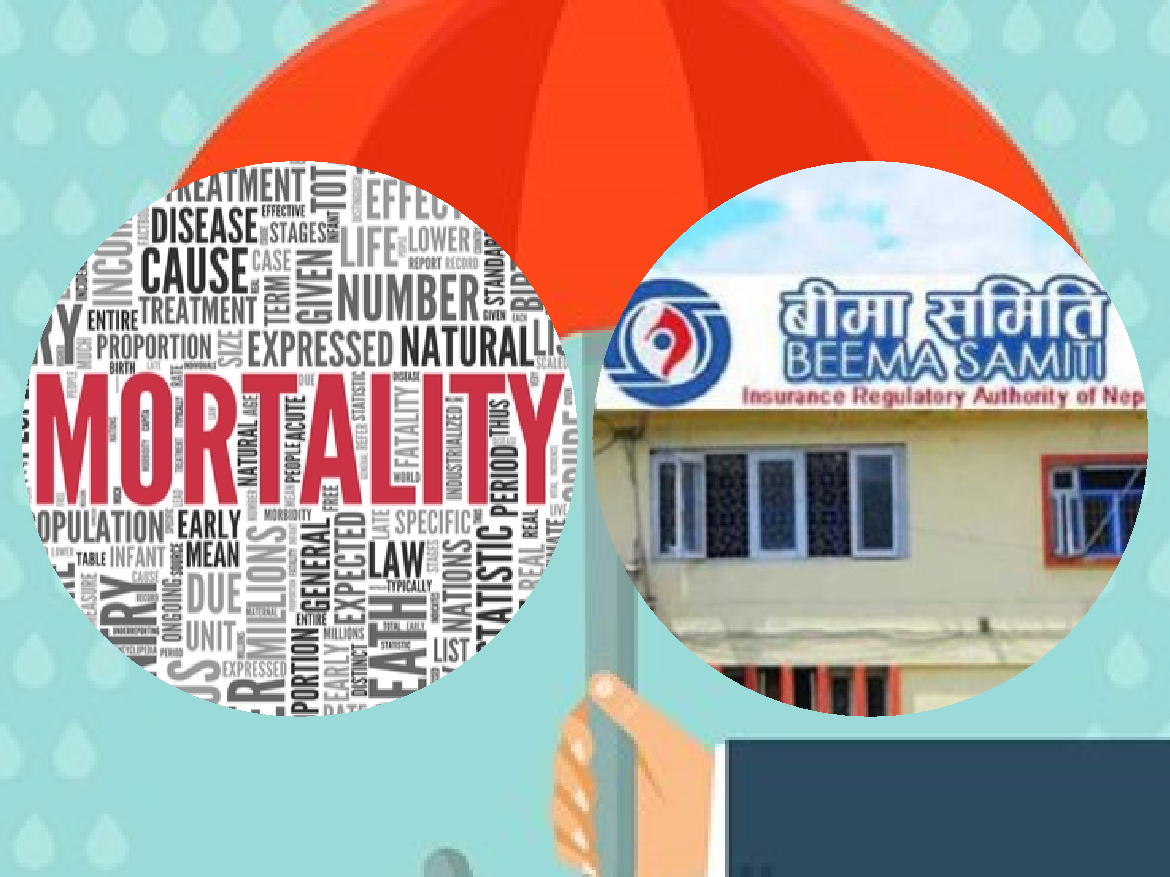Kathmandu: Beema Samiti, the regulator, seems passive in terms of updating the mortality table. The first mortality table was issued by the regulator in 2066 B.S.(2009 AD). It’s been a decade to revise the mortality table. Mortality table is the base of calculating the life expectancy and risk of life.
With the purpose of revising the mortality table, Beema Samiti had collected the data death claim from all insurers during March 2019. The regulator had collected the data of death claim. The data included details of the insured’s death age, gender, cause of death, type of insurance and so on. But no visible progress has been seen yet about the mortality rate table revision.
Beema Samiti had revised the death rate table based on the population census data of 2068 BS. But 10 years have passed since the census. Even though it is time for the census this year, the government has postponed all the census work due to Covid19 pandemic.
Before the first ‘Nepali Insured’s Mortality Rate 2066’, domestic life insurance companies were relying on the mortality rate table of India or other countries.
Insurance companies have been demanding revision for a long time saying that it is not realistic to make mortality schedule based only on census. But Samiti has been procrastinating, citing the cause of the actuary.
Rajuraman Poudel, the executive director of Beema Samiti, said that revising a mortality table needs huge investment to hire a actuary. He informed that, Samiti is planning to hire a foreign actuarial consultant through its appointed actuary.
Beema Samiti has asked the insurers to provide information including death age, gender, cause of death and type of insurance of the insured under the death claim payment made every month for the last 10 years.
The mortality rate of the insured is assessed based on the probability of death of the insured at a certain age. In reinsurance, the insurer also use the death rate table of the insured as the main basis for determining the premium rate. The mortality table covers the probability of death of the insured at any age from birth to the age of 99 years.
The mortality table estimates the probable number of deaths per 1,000 insured at a certain age. As a person gets older, the risk of death due to natural causes, diseases or accidents, occupational risks also increases. As the risk increases with age, health insurance or life insurance also increases the life insurance premium on the basis of age.
Mortality rates are classified on the basis of age, gender, geography, professional background, educational qualifications, hereditary health status of the particular community, alcoholism, smoking addiction, body weight, etc. Insured involved in risky occupations, such as pilot security guards and soldiers serving in the war, are more likely to die than those involved in general service or business. The mortality table helps to project the remaining age of a person of a certain age in addition to the mortality rate.
According to the population report made public by the Central Statistics Office in 2068 BS, the average age of Nepalis is 67 years. According to the National Planning Commission, the average age is 70 years. As the mortality rate decreases with increasing life expectancy, the insured will be able to purchase the insurance plan at a cheaper rate than now.










